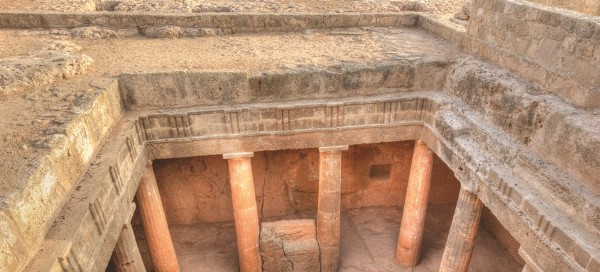Cyprus has long been popular with holidaymakers looking for guaranteed sunshine and its historical links to Britain have left a legacy of familiarity that appeals to many (think driving on the left and the remarkably widespread use of English). But beyond simply going to enjoy the great weather, what else can a visitor to Cyprus experience? Here are just a few of the attractions in and around the busy resort of Paphos on the west of the island.
Ktima
Paphos is the sum of two sharply-contrasting halves. There’s the lively Kato Paphos (Lower Paphos), where you’re just as likely to find all-day English breakfasts as you are to find a place selling souvlaki. Dig around Kato Paphos a little and you can still find some of the old treasures, such as medieval bath houses or ancient churches. But if you’re looking for the more cultural part of town, it’s best to head inland a mile or so to Ktima. Here life goes on as it largely has done for many generations. It’s a calmer pace compared to the party vibe of Kato Paphos, and it’s also where you can find some of the town’s main museums, such as the Archaeological Museum, which houses antiquities dating back to the Neolithic Age.
Paphos Archaeological Park
While Kato Paphos has established itself as the nightlife hotspot, it’s also home to the Paphos Archaeological Park, which was granted UNESCO World Heritage List status in 1980. Visitors can wander around the site and see remarkably-well preserved remains of Roman and early Christian buildings. Most impressive of all are the Roman-era mosaics, many of which depict stories from popular Greek mythology.
Nearby is the Agora or forum, which dates back to the 2nd Century AD, although modern restoration has left it looking not quite as ancient as it really is. There’s the Odeon, a semi-circular theatre hewn out of limestone which was used for plays and musical performances, and the Tomb of the Kings, which in its day (around the 4th Century BC) was the burial places of local officials rather than kings, but its grandeur suggests that these were very important people.
Byzantine Museum
The Byzantine period of Cypriot history stretched for over 1000 years and this museum houses a collection of religious relics that cover a period from the 7th century to the 18th century. They demonstrate the incredible skill of the craftsmen of the day and also of the great importance placed in depicting religious symbols during a time when the majority of people relied mainly on imagery to gain an understanding of the scriptures.
House of Archbishop Makarios III
For something entirely different and to gain an insight into modern Cypriot history, you can visit the house of Archbishop Makarios III, first President of the Republic of Cyprus. It’s a unremarkable house but it has been converted into a museum which tells the life story of this controversial but critical figure in the 20th-century history of Cyprus.





